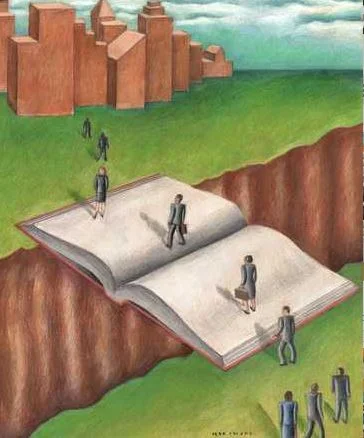Both Internet Technology (IT) and textbooks
are integral parts of EducationEquITy tutoring and tutor training.
INDEED: IT-enhancements are critical to the course structure of today’s college STEM courses, particularly the lectures and/or HWs. THUS: IT-integration is critical to the effectiveness of modern tutoring and tutor training.
INDEED: Textbooks are critical tools for tandem problem-solving and studying-as-necessary well after the lecture. THUS: Textbooks are critical to the effectiveness of modern tutoring and tutor training.
In the "flipped class" structure of many current STEM courses in college, lecture is given via online video the night(s) before large class meetings (previously called "lectures"). During the large class meeting, some problems can be covered. However, due to the size of the class, interactivity is limited to only simple problems.
On these simple problems, which are analogous to example problems in STEM textbooks, "Clickers" are used to tabulate the large class replies to multiple choice questions.
However, for solving more complicated problems, further study often needs to be done.
I (Dan Jetter, founder of EEF) am no Luddite.
I value textbooks because I value appropriate technology, technology that works great for its specific application. I’m not against using technology as a learning aid, I'm just against ostensible learning aids that actually distract from learning. Though an extremely simple technology, textbooks simply are great tools for a specific task. In 80’s terminology, textbooks are “killer apps”.
The specific STEM task for which textbooks are best before, soon after, or long after classes:
Rigorous review of concepts, learning from your mistakes while attempting to apply your review to the solving of quantitative problems
The specific STEM task for which online lessons are best before classes:
Video lectures in which you initially learn of the concepts.
Thus, IT has revolutionized the presentation of new information (ie, the lecture). But IT has not revolutionized the careful digestion (for STEM, via problem-solving interspersed w/ review studying) of that information.
At Hunter, the site of EEF’s initial peer-tutor training project, the General Chemistry course uses a “flipped class” structure. (That is, lecturing is replaced by video-watching at home the night before the “lecture” class time, which is now used for problem-solving pointers.)
I fully support this flipped structure. Integrating a textbook into it AFTER the video can make the course structure even better. Such integration would facilitate tandem ProblemSolving / Study.
Again, though IT has revolutionized how new information is input, IT has not revolutionized how students digest the new information. Textbooks are a critical tool in the study cycle, which is the students’ digestion of new information.
For STEM, much of this digestion is through problem-solving.
Admittedly, I’m biased from my textbook-based STEM education: Offhand, textbooks seem far superior because they inherently make it easy to thoroughly study - and ANALYZE PIECEMEAL - the explanation and application (especially problem-solving) of a concept. In contrast to lecture notes and videos, textbooks:
provide a framework for a conceptual overview of the subject. Onto this framework you can build-on the details. A textbook inherently has this cohesive and complete structure.
are easily and quickly referenced. A textbook has a Table-of-Contents and an index. Just as important, after using any physical (ie, not pdf) textbook a lot, you get a spacial familiarity – associated with a conceptual familiarity – of where things are, including the probable location in the book of concepts-that-you-may-need-to-study-further.
guide you in your study. The textbook’s end-of-chapter problems, which are categorized according to the associated sections in the chapter, provide this guidance.
A textbook does all of these. A course textbook is a critical tool for students’ study. The solving of HW problems guides students' use of this tool, as well as assesses the students' comprehension. Using problem-solving as the context, the EEF-trained tutor reviews concepts and sample problems in the textbook (can be paper version or PDF version).
Yet physical textbooks are often expensive.
But EEF has developed an alternative: a combination of
the pdf of the course textbook (if available) AND
a relatively inexpensive physical book (the AP Prep book for this STEM subject).
The student thus gets
the framework: via the pdf's structure
the references: the pdf's Table-of-Contents and index, though spacial familiarity is lost
study guides that are better tailored to the course: the pdf's end-of-chapter problems provides an intensive guide for rigorous courses, while the AP Prep book provides a concise summary for less-rigorous courses

